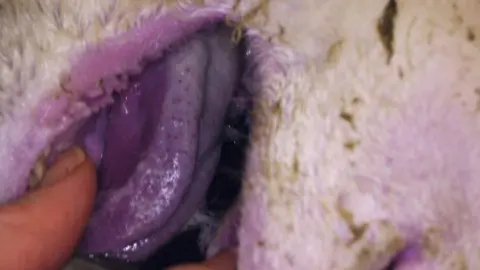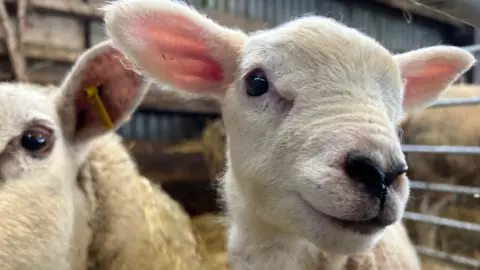Movement controls brought in over bluetongue virus
 The Pirbright Institute
The Pirbright InstituteMovement restrictions have been placed on cattle, sheep and some other livestock in Lancashire following the discovery of bluetongue virus in the county.
Bluetongue virus, which is mainly spread by midge bites, does not affect humans or risk food safety.
In rare instances, however, dogs and other carnivores can contract it if they consume infected substances such as aborted material and afterbirth.
Restrictions were introduced on Sunday. The Department for Environment, Food and Rural Affairs (Defra) has not yet responded to a request from the Local Democracy Reporting Service (LDRS) for further details.
'Restriction zones'
Lancashire has joined several other parts of England already covered by a Defra-designated "restricted zone" designed to stem the spread of the disease.
Within restricted zones, there are strict controls on the movement of animals classed as ruminants.
These include sheep, cattle, goats and deer as well as camelids such as llamas and alpacas.
Bluetongue is classed as a "notifiable" disease, meaning it is an offence not to report it to the authorities.
Livestock owners have been told to keep a close watch for bluetongue and to report any suspicions to Defra.
Under the newly introduced rules, ruminating animals and camelids can only be moved out of a restricted zone if permitted to do so by a vet.
No livestock can be moved within a control zone if there are clinical signs of bluetongue.
Dairy cattle may be moved from the restricted zone to their usual milking parlour and returned directly to their place of origin – provided they go by foot to and from what is the regular place of milking used for the relevant herd.
Signs of bluetongue in sheep include ulcers or sores in the mouth and nose, discharge from the eyes or nose and drooling from mouth, and the swelling of the lips, tongue, head and neck, as well as the coronary band (where the skin of the leg meets the horn of the foot).
Other symptoms include red skin as a result of blood collecting beneath the surface, fever, lameness, breathing problems, abortion, foetal deformities and stillbirths. The disease can be fatal.

Lambs can become infected with bluetongue virus before birth if the dam is infected while pregnant. Signs of infection include lambs born small, weak, deformed or blind. They can die within a few days of birth, and some can be stillborn.
In cattle, signs of bluetongue include lethargy, crusty erosions around the nostrils and muzzle, and redness of the mouth, eyes and, nose;.
Additionally, there can be reddening of the skin above the hoof, nasal discharge, reddening and erosions on the teats, fever, milk drop, and a loss of appetite.
Cows may abort their calves and there can be foetal deformities and stillbirths.
Adult cattle may be infectious for several weeks while showing little or no sign of disease.
They are often the preferred host for the biting midges that carry and transmit bluetongue virus.
Like lambs, calves can become infected with bluetongue virus before birth if the mother is infected while pregnant.
Signs of infection include calves born small, weak, deformed or blind.
Some infected calves die within a few days of birth, while others are stillborn.
Listen to the best of BBC Radio Lancashire on Sounds and follow BBC Lancashire on Facebook, X and Instagram. You can also send story ideas via Whatsapp to 0808 100 2230.
